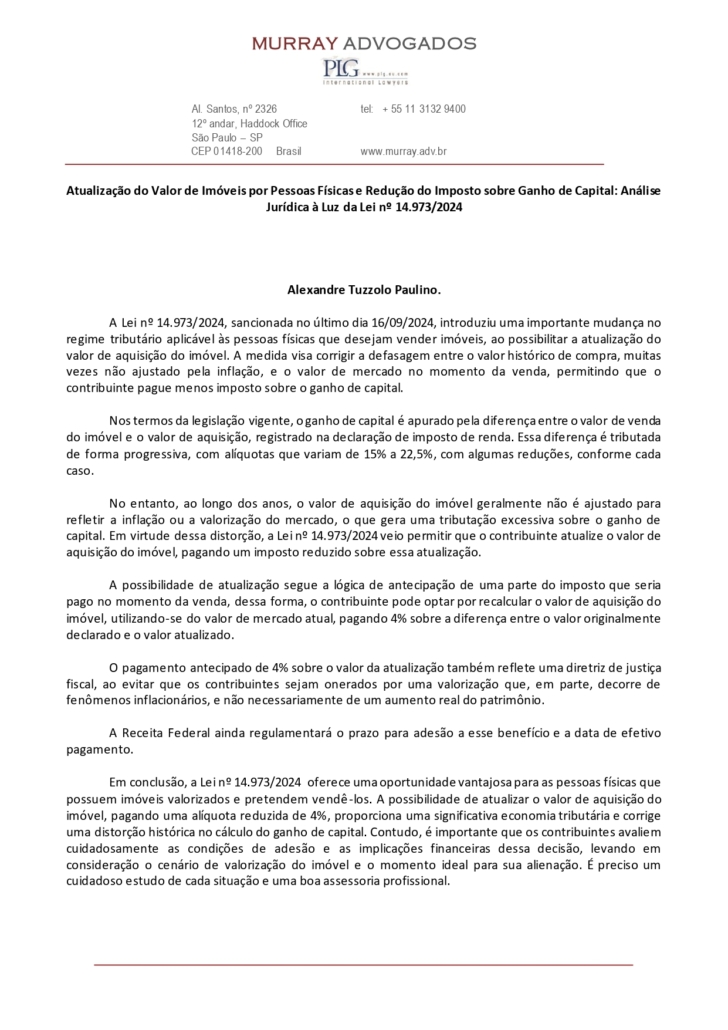Credit rating agency says that if fiscal performance is weak during strong economic growth, it may deteriorate further during an unexpected slowdown
09/27/2024
/i.s3.glbimg.com/v1/AUTH_63b422c2caee4269b8b34177e8876b93/internal_photos/bs/2020/6/o/WzeSSBRGu8YqU2xjIz7w/060220fitch-20ratings032.jpg)
Despite Brazil’s surprising economic growth this year, the country’s fiscal performance has been “weaker than anticipated,” maintaining high uncertainty regarding public finances, according to Fitch Ratings. “Economic outperformance may partly result from the loose fiscal position. If fiscal performance is weak when growth is strong, it could deteriorate further in an unexpected slowdown. Uncertain consolidation prospects are therefore a key macroeconomic vulnerability constraining Brazil’s ‘BB’/Stable sovereign rating.”
In a commentary released Thursday, signed by analysts Todd Martinez, Shelly Shetty, and Mark Brown, Fitch noted that the Lula administration is aiming for gradual fiscal consolidation after allowing the deficit to increase last year to accommodate a rise in social spending. However, the analysts pointed out that the government faces challenges both in significantly boosting revenues and in controlling expenditures.
The agency highlighted that the government projects a primary deficit of 0.6% of GDP this year, which would be the maximum allowed under the fiscal framework and zero-deficit target, with a tolerance range of plus or minus 0.25% of GDP. However, this projection does not account for certain expenses, such as those related to flooding in Rio Grande do Sul. Fitch stated that it expects the government to achieve this target, “but it would not be an auspicious start to the consolidation process.”
Fitch analysts emphasized that the main revenue-enhancing measures are either temporary or have uncertain outcomes, specifically mentioning revenues from dispute settlements under the Administrative Council for Economic Defense (CARF). Moreover, they regarded the government’s contemplated measures to offset revenue shortfalls, such as using idle bank deposits and increasing dividends from the Brazilian Development Bank (BNDES), as “improvisational measures.” “Such improvisational measures show a commitment to fiscal targets but do not offer structural fiscal improvements,” the agency said.
Meanwhile, Fitch noted that controlling expenditures has proven to be a “challenging” process, particularly with higher-than-expected pension costs. Additionally, the agency warned that indexing and tying expenditures to specific revenues would “keep pressure on social expenditures in the next few years, requiring a further squeeze of discretionary spending to compensate that could eventually become unviable.” Thus, the agency acknowledged the government’s initiative to combat fraud in social programs but stressed that “political appetite for changes that deliver major relief remains unclear.”
In its updated projections, Fitch now expects a 2.8% growth rate for this year. Regarding public finances, the agency predicts a primary deficit of 1% of GDP in 2025, higher than the previous forecast of 0.7%. “This would exceed the maximum 0.6% allowed by the fiscal rule,” it warned. Furthermore, interest costs are expected to rise due to the Central Bank initiating a mini-cycle of monetary tightening. “This will lift interest payments immediately, given a high share (45%) of floating-rate debt.”
Fitch forecasts that economic growth will slow to 2% starting in 2025. In this context, the agency projects that debt will reach 77.8% of GDP this year and 83.9% of GDP by 2026. “This is faster than previously forecast, widening the gap to the ‘BB’ category median of 55%,” the Fitch analysts remarked.
*By Victor Rezende, Valor — São Paulo
Source: Valor International

/i.s3.glbimg.com/v1/AUTH_37554604729d4b2f9f3eb9ad8a691345/internal_photos/bs/2024/9/5/LE3p88QAauPgvyXBqfBQ/100724suzano30.jpg)
/i.s3.glbimg.com/v1/AUTH_37554604729d4b2f9f3eb9ad8a691345/internal_photos/bs/2024/y/O/yFNADCSUyPzlGa52RNuA/475ae156-ac90-47a5-b025-5b08dfd414be.jpg)
/i.s3.glbimg.com/v1/AUTH_37554604729d4b2f9f3eb9ad8a691345/internal_photos/bs/2023/x/Q/bsHGZzT7SotfsMRDun0Q/041223ubsglobal9.jpg)
/i.s3.glbimg.com/v1/AUTH_37554604729d4b2f9f3eb9ad8a691345/internal_photos/bs/2024/B/S/VAxbRcSYGhJiDpmjaXbg/eldorado-anna-carolina-negri-valor.png)
/i.s3.glbimg.com/v1/AUTH_37554604729d4b2f9f3eb9ad8a691345/internal_photos/bs/2024/y/t/vjAU29TaKM6tEEPyawnA/210824vinlandcapital004.jpg)
/i.s3.glbimg.com/v1/AUTH_63b422c2caee4269b8b34177e8876b93/internal_photos/bs/2024/9/x/WBuDObQyukiyezOUKtfw/foto24bra-101-lula-a8.jpg)

/i.s3.glbimg.com/v1/AUTH_37554604729d4b2f9f3eb9ad8a691345/internal_photos/bs/2024/J/O/rHyipJQw6FO0QaEtaSzQ/050624sulamerica011.jpg)